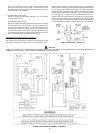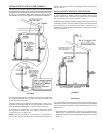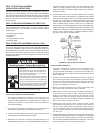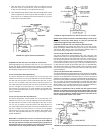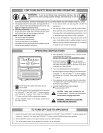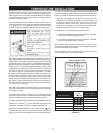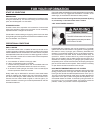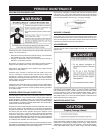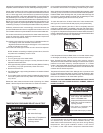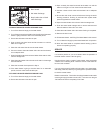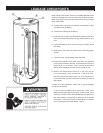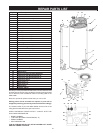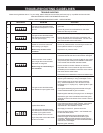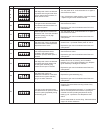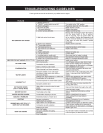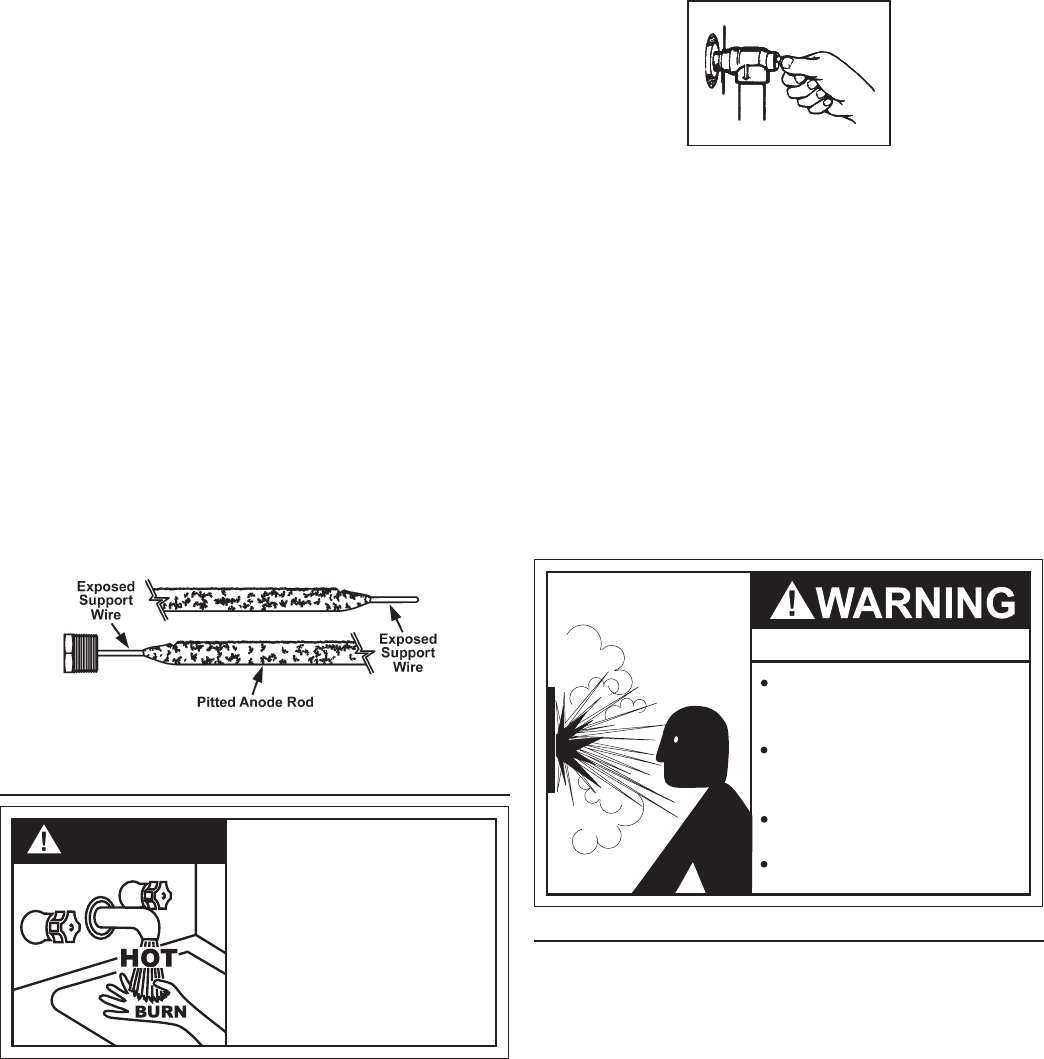
30
methods can increase the rate of anode rod depletion. Once the anode rod
is depleted, the tank will start to corrode, eventually developing a leak.
Certain water conditions will cause a reaction between the anode rod
and the water. The most common complaint associated with the anode
rod is a “rotten egg smell” produced from the presence of hydrogen
suldegasdissolvedinthewater.IMPORTANT:Donotremovethis
rod
permanently as it will void any warranties. The parts list includes a
special anode rod that can be ordered if water odor or discoloration occurs.
NOTE: This rod may reduce but not eliminate water odor problems.
The
watersupplysystemmayrequirespecialltrationequipmentfromawater
conditioning company to successfully eliminate all water odor problems.
Articiallysoftenedwateris exceedingly corrosive because the
process substitutes sodium ions for magnesium and calcium ions. The
use of a water softener may decrease the life of the water heater tank.
The anode rod should be removed from the water heater tank every
3yearsforinspection.NOTE:articiallysoftenedwaterrequiresthe
anode rod to be inspected annually.
The following are typical (but not all) signs of a depleted anode rod:
* The majority of the rods diameter is less than 3/8”.
*Signicantsectionsofthesupportwire(approx.1/3ormoreofthe
anoderod’slength)arevisible.
If the anode rod show signs of either or both it should be replaced.
NOTE: Whether re-installing or replacing the anode rod, check for
any leaks and immediately correct if found.
In replacing the anode:
1. Turn off gas supply to the water heater.
2. Shut off the water supply and open a nearby hot water faucet to
depressurize the water tank.
3. Drain approximately 5 gallons of water from tank (Refer to “Draining
and Flushing” for proper procedures). Close drain valve.
4. Remove old anode rod.
5. UseTeon®tapeorapprovedpipesealantonthreadsandinstall
new anode rod.
6. Turn on water supply and open nearby hot water faucet to purge air
from water system. Check for any leaks and immediately correct
any if found.
Restart the water heater as directed under “Operating Your Water
Heater.” See the Repair Parts Illustration for anode rod location.
FIGURE 28.
TEMPERATURE-PRESSURE RELIEF VALVE TEST
DANGER
• Burn hazard.
• Hot water discharge.
• Keep clear of Temperature-
Pressure Relief Valve
discharge outlet.
It is recommended that the Temperature-Pressure Relief Valve should
be checked to ensure that it is in operating condition every 6 months.
When checking the Temperature-Pressure Relief Valve operation, make
sure that (1) no one is in front of or around the outlet of the Temperature-
Pressure Relief Valve discharge line, and (2) that water discharge will
not cause any property damage, as water may be extremely hot. Use
care when operating valve as the valve may be hot.
To check the relief valve, lift lever at the end of valve several times,
see Figure 29. The valve should seat properly and operate freely.
If after manually operating the valve, it fails to completely reset and
continues to release water, immediately close the cold water inlet to
the water heater and drain the water heater, see Draining And Flushing
on page 30-31. Replace the Temperature-Pressure Relief Valve with a
properly rated/sized new one, see Temperature-Pressure Relief Valve
on page 15-16 for instructions on replacement.
DISCHARGE PIPE
TEMPERATURE-PRESSURE
RELIEF VALVE
FIGURE 29.
If the Temperature-Pressure Relief Valve on the water heater weeps
or discharges periodically, this may be due to thermal expansion.
Note: Excessive water pressure is the most common cause of
Temperature-Pressure Relief Valve leakage. Excessive water system
pressure is most often caused by “thermal expansion” in a “closed
system.” See Closed Water Systems and Thermal Expansion on page
14-15. The Temperature-Pressure Relief Valve is not intended for the
constant relief of thermal expansion.
Temperature-Pressure Relief Valve leakage due to pressure build
up in a closed system that does not have a thermal expansion tank
installed is not covered under the limited warranty. Thermal expansion
tanks must be installed on all closed water systems.
DO NOT PLUG THE TEMPERATURE-PRESSURE RELIEF VALVE
OPENING. THIS CAN CAUSE PROPERTY DAMAGE, SERIOUS
INJURY OR DEATH.
Explosion Hazard
Temperature-Pressure Relief Valve
must comply with ANSI Z21.22-
CSA 4.4 and ASME code.
Properly sized Temperature-Pressure
Relief Valve must be installed in
opening provided.
Can result in overheating and
excessive tank pressure.
Can cause serious injury or death.
DRAINING AND FLUSHING
It is recommended that the water heater storage tank be drained
and flushed every 6 months to reduce sediment buildup. The
water heater should be drained if being shut down during freezing
temperatures. See Typical Installation section in this manual
for location of the water heater components described below.



